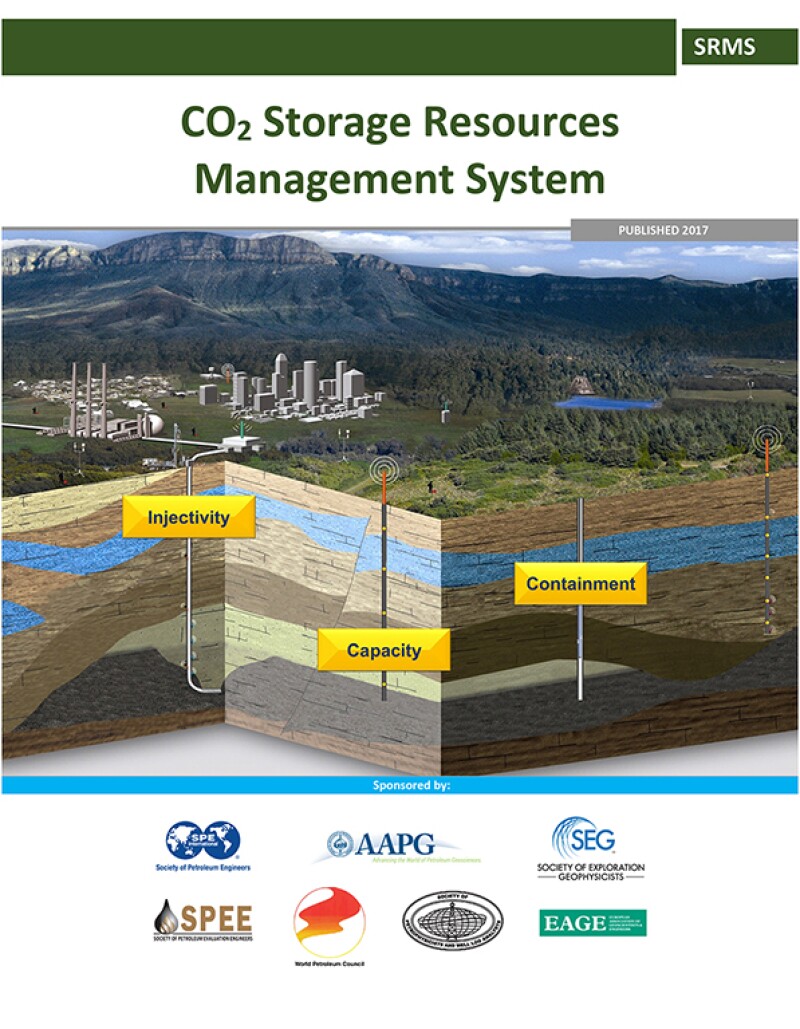SPE’s Storage Resources Management System (SRMS), first published in 2017, is a system that aims to provide the carbon capture and storage (CCS) community with a standardized storage resources classification and categorization framework. This project-based system provides all stakeholders a means for comparing and contrasting CO2 storage estimates based on uncertainty of the project’s commerciality and storable quantities. The SRMS classification is aligned with that of the time-tested and widely used SPE Petroleum Resources Management System (PRMS).


The Total Storage Resources are divided into Discovered and Undiscovered Storage Resources based on project maturity. For resource assessments, a notional project is specified to estimate the Undiscovered Resources or Prospective Storage Resources (PSR) using the lowest project maturity subclassification, PSR‑Play. The most mature project PSR subclassification is PSR-Prospect, a potential storage well location that is sufficiently defined to represent a viable drilling target or identification of existing well to be characterized for storage and the specified project.
The Discovered Storage Resources are subdivided into Contingent Storage Resources (CSR) and Capacity. At the time of the storage project assessment, CSR is sub-commercial, and Capacity is commercial. SRMS recommends the use of net cash flow or net present value to determine commerciality for a CO2 storage project that is standalone or integrated with the economics of a related project (e.g., the CO2 source, such as an ethanol plant). For commercial projects, based on the uncertainty of storable quantities, Capacity can be categorized as Proved (P90), Probable (P50), and Possible (P10). (Capacity is analogous to Reserves in the PRMS.) Specifications of commercial projects must have forecasts of technological, economic, legal, environmental, social, and governmental factors for the specified life of the project.
The most mature project subclassification used by SRMS is Capacity-On Injection, for projects actively injecting and storing CO2. However, for storable quantities to be classified as Capacity, active injection is not required at the time of the assessment. The least mature project subclass of commercial projects is Capacity-Justified for Development. For storable quantities determined for a project under this subclassification, there must be a reasonable expectation that financing will be secured and allocated to the project, all required permits will be acquired, and all required contracts will be completed in a reasonable time frame based on the detailed development plan.
Storable quantities, the accessible pore volume in a geologic formation in which CO2 could be stored, is the basis of the SRMS. The following methods of calculating storable quantities are similar to oil and gas in-place methods: volumetrics, rate-time plots, material balance, and reservoir simulation. Depending on project maturity, varying assumptions are acceptable for each method used to estimate storable quantities. Explicit in the definition of storable quantities is that geologic and wellbore containment must be ascertained.
In 2022, the SRMS Guidelines were published by SPE and are co-sponsored by SPE, SPEE, AAPG, SPWLA, SEG, WPC, and EAGE—all of which also co-sponsor the SRMS. The SRMS Guidelines include suggestions for the application of the SRMS with the intent of including details of the processes of quantification, categorization, and classification of storable quantities so that the subjective nature of subsurface assessments can be consistent between storage resource assessors.
The CO2 Storage Resources Committee (CSRC), under the SPE Carbon Dioxide Capture, Utilization and Storage (CCUS) Technical Section, manages the SRMS and Guidelines. Currently, the CSRC is developing training materials, working toward an update to the SRMS, and developing webpages for user comments and questions.
The SRMS document is available here.
The SRMS Guidelines are available for purchase here.
The Carbon Dioxide Storage Resource Management System (SRMS) Guidelines eBook (with updated SRMS) is available for purchase here.

